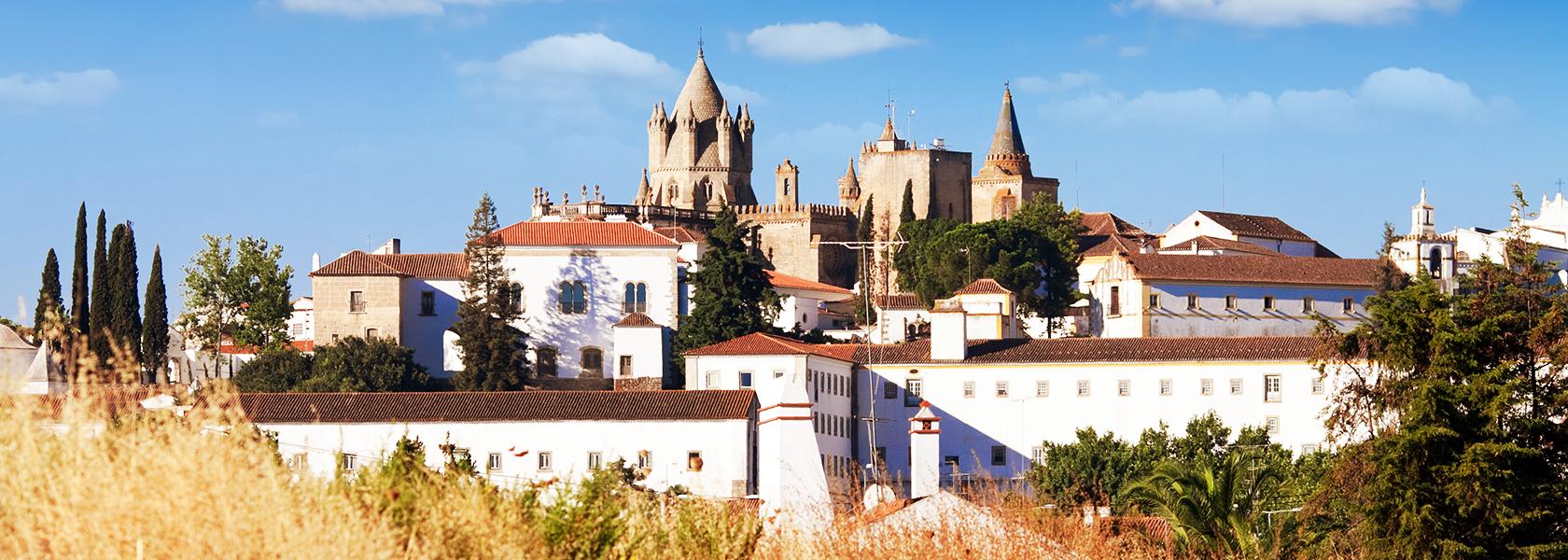TOP 10 EXPERIENCES
For Portugal
8. Stroll around the historic centre of Évora and sample local cuisine
Évora is a museum of a city. Situated on a low hill, its historic centre is filled with monuments and carefully designed squares, and mostly traditional houses. White predominates. The city grew around a centre core and although it is easy to lose your way you will soon find it again. Traces remain here of Roman, Muslim and Christian rule and it was here, too, that the end of the monarchy in Portugal was announced. It is a really lovely tranquil place to walk around.
You can start at the Roman Temple whose Corinthian columns in granite tower over a square, recalling when Portugal was part of the Roman Empire, and then walk past the city’s museum and cathedral, the latter being a medieval building erected when European Christianity was at its apogee. Walking on along various streets in a southerly direction, you will catch sight of the Igreja da Graça, a complex and somewhat bizarre late-Renaissance building, with grand sculptures of human figures perched on it. Those who like macabre scenarios should visit the Capela dos Ossos, a 17th century chapel which human remains were used to make decorative patterns and motifs. From here you can head for the Praça do Giraldo, the city’s geographic centre, in and around which you will find plenty of bars, shops and restaurants.
And if a good walk is an excellent way to work up an appetite, what better than traditional Alentejo food to satisfy it? It features the strong flavours of ingredients that come from the land and the animals that are raises on it, and there are various excellent restaurants that are masters are preparing this traditional cuisine. Make the most of local fare such as açordas (bread soup with garlic, coriander and egg) and migas (breadcrumbs fried in pork fat), rich stews and soups, mutton and lamb, pork and game, broad beans and green beans. Then there are the regional sweets, many of whose recipes originated in medieval convents.

